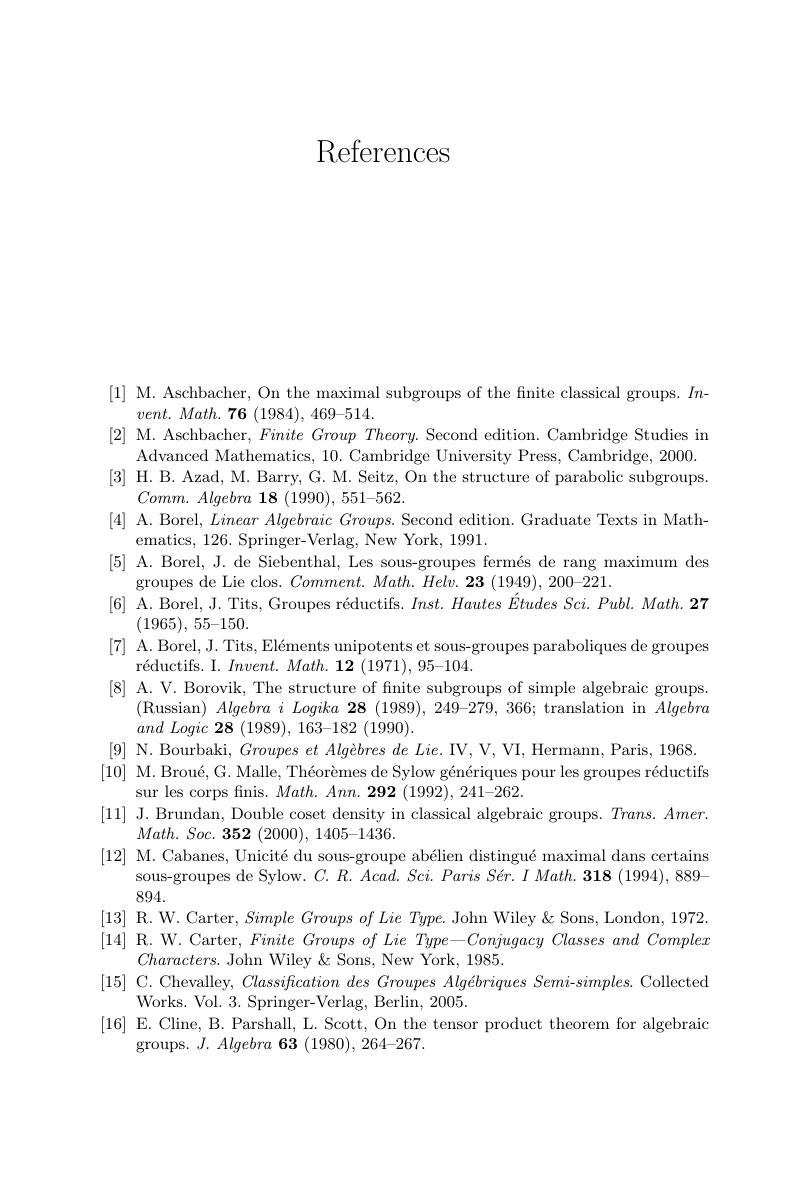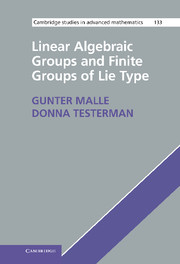Book contents
- Frontmatter
- Contents
- Preface
- List of tables
- Notation
- PART I LINEAR ALGEBRAIC GROUPS
- PART II SUBGROUP STRUCTURE AND REPRESENTATION THEORY OF SEMISIMPLE ALGEBRAIC GROUPS
- PART III FINITE GROUPS OF LIE TYPE
- Appendix A Root systems
- Appendix B Subsystems
- Appendix C Automorphisms of root systems
- References
- Index
- References
References
Published online by Cambridge University Press: 05 June 2012
- Frontmatter
- Contents
- Preface
- List of tables
- Notation
- PART I LINEAR ALGEBRAIC GROUPS
- PART II SUBGROUP STRUCTURE AND REPRESENTATION THEORY OF SEMISIMPLE ALGEBRAIC GROUPS
- PART III FINITE GROUPS OF LIE TYPE
- Appendix A Root systems
- Appendix B Subsystems
- Appendix C Automorphisms of root systems
- References
- Index
- References
Summary

- Type
- Chapter
- Information
- Linear Algebraic Groups and Finite Groups of Lie Type , pp. 301 - 304Publisher: Cambridge University PressPrint publication year: 2011



